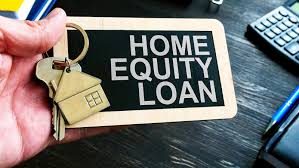SBA Loan: A Comprehensive Guide to Understanding, Applying for, and Managing SBA Loans

Small Business Administration (SBA) loans offer vital support for small businesses looking to expand, purchase equipment, or navigate financial challenges. These loans, backed by the U.S. government, provide favorable terms and lower interest rates compared to conventional loans. This guide covers everything you need to know about SBA loans, including types, application processes, benefits, and management strategies.
What is an SBA Loan?
An SBA loan is a type of loan partially guaranteed by the Small Business Administration (SBA). Unlike traditional bank loans, SBA loans are designed to help small businesses that might not qualify for conventional financing. The SBA guarantees a portion of the loan, reducing the lender’s risk and allowing them to offer more favorable terms to borrowers.
Key Features of SBA Loans
- Government Guarantee: The SBA guarantees a percentage of the loan, which reduces the lender’s risk.
- Competitive Interest Rates: SBA loans typically offer lower interest rates compared to traditional loans.
- Flexible Terms: Loans come with various term lengths and repayment options, making them adaptable to different business needs.
- Larger Loan Amounts: SBA loans can provide substantial funding, making them suitable for major business investments.
Types of SBA Loans
SBA loans come in several types, each designed to meet specific business needs. Understanding these types can help you choose the right loan for your situation.
1. SBA 7(a) Loan Program
The SBA 7(a) loan is the most popular SBA loan program and provides funding for a wide range of business purposes, including working capital, equipment purchase, and business expansion. Key features include:
- Loan Amounts: Up to $5 million.
- Repayment Terms: Up to 25 years for real estate and 10 years for equipment and working capital.
- Interest Rates: Variable or fixed, with rates determined by the lender and SBA guidelines.
2. SBA 504 Loan Program
The SBA 504 loan is designed for businesses looking to finance major assets, such as real estate or large equipment. It provides long-term, fixed-rate financing. Key features include:
- Loan Amounts: Up to $5.5 million.
- Repayment Terms: Up to 20 years for real estate and 10 years for equipment.
- Interest Rates: Fixed rates, typically lower than conventional financing.
3. SBA Microloan Program
The SBA Microloan program provides small loans to startups and smaller businesses. It is ideal for businesses that need smaller amounts of capital for working capital or inventory. Key features include:
- Loan Amounts: Up to $50,000.
- Repayment Terms: Up to 6 years.
- Interest Rates: Typically higher than 7(a) loans but still competitive.
4. SBA Disaster Loans
The SBA Disaster Loan program offers financial assistance to businesses affected by natural disasters. It helps with repairs, replacements, and working capital. Key features include:
- Loan Amounts: Varies based on needs and damages.
- Repayment Terms: Up to 30 years.
- Interest Rates: Low rates, set by the SBA based on the disaster’s severity.
Eligibility Requirements for SBA Loans
To qualify for an SBA loan, businesses must meet certain eligibility requirements. These requirements can vary depending on the loan type but generally include:
1. Business Size
The business must qualify as a small business according to SBA size standards. These standards vary by industry and are based on factors such as annual revenue and employee count.
2. Business Type
Eligible businesses include for-profit entities, partnerships, and corporations. Non-profit organizations are typically not eligible, except for certain disaster relief programs.
3. Creditworthiness
Borrowers must have a good credit history. While the SBA does not set specific credit score requirements, lenders generally prefer scores of 650 or higher.
4. Business History
Lenders prefer businesses with a proven track record. Startups may need to provide a solid business plan and financial projections.
5. Ability to Repay
Borrowers must demonstrate the ability to repay the loan. This is usually assessed through financial statements, cash flow projections, and other financial documents.
Applying for an SBA Loan
The application process for an SBA loan involves several steps. Here’s a detailed guide to help you navigate the process:
1. Prepare Your Business Plan
A well-prepared business plan is crucial for securing an SBA loan. It should include:
- Executive Summary: A concise overview of your business, goals, and funding needs.
- Business Description: Details about your business, products or services, and market position.
- Financial Statements: Historical financial statements and projections, including balance sheets and income statements.
- Management Team: Information about the management team’s experience and qualifications.
2. Gather Required Documentation
To apply for an SBA loan, you’ll need to provide various documents, including:
- Personal and Business Tax Returns: Typically for the last three years.
- Personal Financial Statement: Detailed statement of your personal assets and liabilities.
- Business Licenses: Proof of legal business registration and licenses.
- Bank Statements: Recent statements to verify your financial condition.
3. Choose a Lender
Research and select a lender that participates in the SBA loan program. You can apply through banks, credit unions, or online lenders. Compare their terms, fees, and loan offerings.
4. Submit Your Application
Complete and submit your loan application, along with all required documents. You may need to provide additional information or answer questions from the lender during the review process.
5. Loan Processing and Approval
The lender will review your application and documents. They may request additional information or clarification. Once the loan is approved, you’ll receive a loan commitment letter detailing the terms and conditions.
6. Closing and Funding
After approving the loan, the lender will arrange a closing meeting where you’ll sign the loan agreement. Once the paperwork is complete, the funds will be disbursed to your business.
Managing Your SBA Loan
Effective management of your SBA loan is essential for maintaining financial health and ensuring timely repayment. Here’s how to manage your SBA loan effectively:
1. Understand Your Repayment Terms
Review your loan agreement to understand the repayment terms, including the amount, frequency, and due dates of payments. Make sure to adhere to these terms to avoid penalties.
2. Set Up a Budget
Incorporate your loan payments into your business budget. Allocate funds specifically for loan repayment to ensure you can meet your financial obligations.
3. Monitor Your Financial Performance
Regularly review your financial statements and cash flow to track your business’s performance. Ensure that you’re generating enough revenue to cover loan payments and other expenses.
4. Communicate with Your Lender
Maintain open communication with your lender. If you encounter financial difficulties or need to adjust your repayment schedule, discuss options such as loan modification or deferment with your lender.
5. Make Extra Payments When Possible
If your cash flow allows, consider making extra payments toward your loan principal. This can reduce the total interest paid and shorten the loan term.
6. Maintain Accurate Records
Keep detailed records of all financial transactions, including loan payments. Accurate record-keeping will help you track your progress and prepare for future financial needs.
Benefits and Drawbacks of SBA Loans
Understanding the benefits and drawbacks of SBA loans can help you determine if they are the right financing option for your business.
Benefits of SBA Loans
- Lower Interest Rates: SBA loans often have lower interest rates compared to conventional loans.
- Longer Repayment Terms: Extended repayment terms reduce monthly payments and improve cash flow.
- Flexibility: Funds can be used for a variety of purposes, including expansion, equipment purchase, and working capital.
- Government Guarantee: The SBA guarantee reduces the lender’s risk, making it easier for businesses to qualify.
Drawbacks of SBA Loans
- Lengthy Application Process: The application and approval process can be time-consuming and require substantial documentation.
- Strict Eligibility Requirements: Meeting the SBA’s eligibility criteria can be challenging for some businesses.
- Fees and Costs: SBA loans may come with fees, such as application fees or guarantee fees, which can add to the overall cost of the loan.
Conclusion
SBA loans are a valuable financial resource for small businesses seeking to grow, invest, or overcome financial challenges. By understanding the types of SBA loans, eligibility requirements, application process, and effective management strategies, you can make informed decisions and utilize these loans to their fullest potential.
Whether you’re looking to expand your operations, invest in new equipment, or manage cash flow, SBA loans offer favorable terms and support to help your business succeed. Careful planning, thorough preparation, and effective management will enable you to leverage SBA loans effectively and achieve your business goals.




